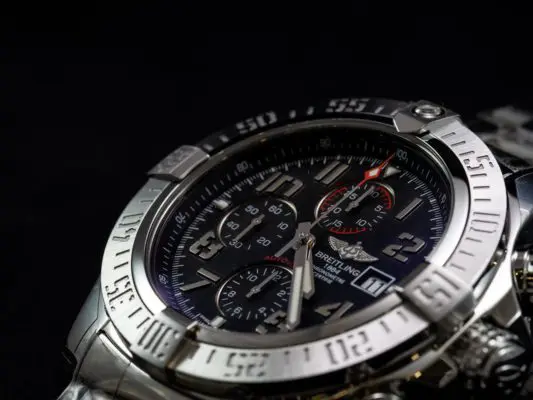Case, crown, bezel and lugs are some of the common terminologies used in the world of luxury watches. Photo: Unsplash
Stepping into the world of luxury watches can be overwhelming, especially with all the specialised watch terminology that enthusiasts and collectors use. From the meaning of each terminology to getting acquainted with the language of horology is key to fully appreciating the craftsmanship behind luxury timepieces. This beginner’s guide will help demystify some of the most commonly used terms in the world of luxury watches.
Understanding The Terminology of Watch Parts
When you start exploring luxury watches, you’ll often hear terms that describe the different parts of a watch. Here are some of the essential terminologies of different watch parts that you need to know:
Case: The case is the outer shell of the watch that houses the movement. It can be made from various materials, such as stainless steel, titanium or gold. The size and shape of the case play a big role in the watch’s overall aesthetic.
Crown: The crown is a small knob on the side of the watch used to adjust the time and wind the movement in mechanical watches. Some watches have screw-down crowns, which help improve water resistance.
Dial: The dial is the face of the watch where the hour markers, hands and other indicators (like date windows) are displayed. Dials can come in various styles, from minimalist designs to elaborate patterns.
Bezel: The bezel is the ring that surrounds the watch dial. On some watches, like dive watches, the bezel can rotate and be used to measure elapsed time.
Lugs: Lugs are the small protrusions on the watch case where the strap or bracelet is attached.
Crystal: The crystal is the transparent covering that protects the dial. It is typically made from sapphire, acrylic or mineral glass.
Automatic Watch Meaning and Movements
One of the most important terms you’ll come across when learning about watches is “automatic watch”. An automatic watch, also known as a self-winding watch, is powered by the movement of the wearer’s wrist. Inside the watch is a rotor that spins as you move, winding the mainspring and powering the watch without the need for manual winding.
In contrast, a manual watch requires the wearer to wind the mainspring by hand, usually by turning the crown. While quartz watches rely on batteries for power, automatic and manual watches are entirely mechanical, making them prized for their craftsmanship and engineering.
Many watch enthusiasts prefer automatic watches because they represent the pinnacle of traditional watchmaking. The craftsmanship required to build a movement that powers a watch through mere motion is both intricate and impressive, making automatic watches highly desirable among collectors.
Luxury Watch Terminology for Complications
A complication is any function on a watch that goes beyond basic time-telling. Here are some common complications you may encounter in luxury watch terminology:
Chronograph: A chronograph is a watch that functions as a stopwatch, allowing the wearer to measure elapsed time. Many chronographs have subdials that display minutes, seconds and hours.
Moonphase: A moonphase complication shows the current phase of the moon as it appears in the sky. This is a popular feature in dress watches and adds a touch of elegance to the dial.
Tourbillon: A tourbillon is a complex mechanism designed to improve accuracy by counteracting the effects of gravity on the watch’s movement. It is one of the most complicated and prestigious features in luxury watches.
Perpetual Calendar: A perpetual calendar is a complication that accounts for the varying lengths of months and leap years, automatically adjusting the date without the need for manual correction.
Watch Materials and Their Importance
Another important part of watch parts terminology is the material used in the watch’s construction. Luxury watches often use high-end materials that contribute to both the aesthetic and durability of the timepiece:
Stainless Steel: A common and durable material used in watch cases and bracelets.
Gold: Luxury watches often come in white, yellow, or rose gold, offering a touch of opulence.
Titanium: Lightweight and strong, titanium is used in sporty or dive watches.
Sapphire Crystal: A highly scratch-resistant material used for the watch’s crystal.
Getting Into The World of Luxury Watches
Understanding watch terminology is essential for anyone entering the world of luxury watches. From the meaning of an automatic watch to mastering the terminologies of watch parts, this guide equips you with the knowledge you need to appreciate the craftsmanship and intricacy of these exquisite timepieces. Whether you’re a beginner or an experienced collector, knowing the language of horology will enhance your journey into the fascinating world of luxury watches.
If you’re interested in learning more about watches, visit JPendulum for more information.

